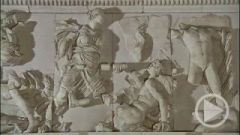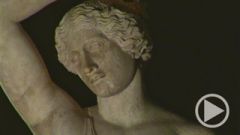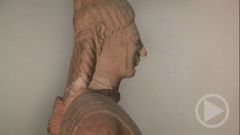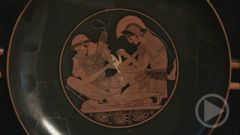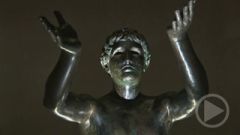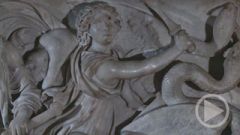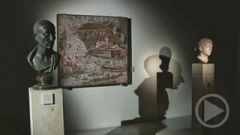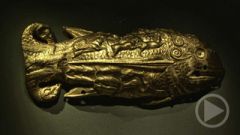- Home
- »
- Germany
- »
- Berlin
- »
- Museum Island
- »
- Pergamon Museum
- »
- The Collection of Classical Antiquities
- »
- The Pergamon Museum - Hephaiston Mosaic
Hephaiston Mosaic
Hephaiston Mosaic
Long before the Romans, the Greeks had become masters of the art of mosaic. Unfortunately, only very few Greek mosaics have survived. This magnificent artwork comes from the dining hall of the largest palace on Pergamon's castle mound. It was created for King Attalus the Second in about 160 B.C., that is to say at the time when the altar of Zeus was still being built.
The loveliest part of the mosaic is the border of the centre section. It's a frieze with tendrils that have an almost sculptural effect. Birds, butterflies and grasshoppers flit among the leaves, flowers and fruit. Here and there, graceful winged cupids play. The frieze is only 20 centimetres wide, but it is a vivid representation of a small paradise. Apparently the artist who created this masterpiece was quite proud of his work. For this is one of the few mosaics that bear a signature. In this case, it's a rather original one: in the inner section, almost as if it had been forgotten, a note appears to detach from the floor. It says "Hephaistion epoiei", "created by Hephaistion".


